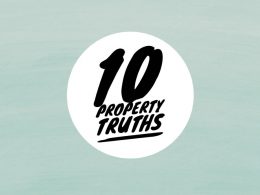What is a bridging loan?
If you’re in the market to buy a new home but you haven’t yet sold your existing home, you may need a bridging loan. Bridging finance funds the purchase of a new home until the old home has been sold. It’s a convenient way of moving quickly on a new property, without having to wait until your current home is sold.
A short term loan, typically six to 12 months, bridging finance covers both your existing and your new debt. During the bridging period, the time taken between buying a new home and selling your old home, repayments are usually calculated on an interest only basis.
By continuing to make your repayments you’ll help reduce the total amount on your loan so that if your existing home takes a little longer to sell you won’t be left with a hefty debt to repay.
Be sure to do your homework and check out all of the loan features. Because this can be a tricky form of finance, it’s best to have a mortgage adviser or a mortgage broker go over the details with you.
How does it work?
A bridging loan is calculated by adding together the value of your new home with the outstanding debt owing on your existing home, then subtracting the potential sales price of your existing home.
The leftover amount is called the ‘ongoing balance’ or principal in your bridging loan. During the bridging period, you are generally only required to pay back the interest calculated on the principal. Interest will be compounded monthly at the standard variable rate and added to your ongoing balance, which becomes your mortgage on your new property when your old one has sold.
In order to avoid paying a considerable amount of interest, it’s best to have at least 50% of your existing home’s value in equity before you consider a bridging loan.
Keep in mind that during the bridging period you are essentially paying off the interest on two mortgages. So be realistic about your expectations in the sale of your existing home; you may need to sell sooner in order to meet the terms of your agreement.
What are the risks?
Possibly the biggest risk is overestimating the sales price of your current home. If your home sells for considerably less than you estimated, your bridging loan may not cover the cost of your new home and you end up with a far bigger debt to repay.
Some lenders may also increase the interest rate if your existing home does not sell within the bridging period, adding the pressure of trying to service both loans.
If structured correctly, bridging finance can be helpful. It takes away the pressure of matching up settlement dates and gives you time to sell your current home without worrying about potentially losing out on your new home.
What to consider?
The right bridging loan will depend on a number of factors:
- How long do you need the funds for?
- What is the average time on the market in your area? (eg. How long will it take for your current home to sell)
- How quickly can you get your current home ready to go on the market?
- Do you have an unconditional contract on the property you are selling or do you still have to sell?
- Are you building your new home or buying an established property?
- Are the buying a residential or an investment property?
- Are you able to service or meet the repayments on your current loan and the bridging loan?
Benefits and Risks
Benefits
- Allows you to move quickly on a new property purchase, without worrying about selling your existing home first.
- Provides an option when high loan to value financing is not available.
- Provides finance to build a new home while you live in your current home.
Risks
- The sale of your existing home takes longer than anticipated or falls through, leaving you with a sizeable debt.
- During the bridging period you are essentially covering two mortgages.
- Interest only repayments can leave you with a much larger debt at the end of the bridging period.
- There are a number of fees included in arranging bridging finance; an expensive form of finance especially for longer terms.
How to minimise the damage…
Option 1: Try and negotiate a long settlement on the house you are trying to buy.
Often owners are happy to give 3 or 4 month settlements. This will allow you plenty of time to sell your current home and not have to use your bridging finance at all.
Option 2: Sell your existing home first with a long settlement.
If the idea of using bridging finance scares you completely then this will be the best option. Get your current home on the market, negotiate the best possible price without being in a rush, then negotiate a 3-4 month settlement so you have 12+ weeks to find a new home as a cash buyer.
I talked extensively about this big decision for owners in other posts…
5 things you must do before you sell
If you are considering whether bridging finance could be the right option for you, get some advice first:











Great article. Nice information about bridge loans and its advantages and disadvantages. The author has given complete information about its duration and how this finance is going to help. Bridge loans are good when we are using them for a limited time period.
Hi Andrew ( Good name that).
Due to a job shift, we are having to move, but we own our current property outright. While we haven’t sold that yet, the real estate agents are v sure that it will shift quickly – beautiful life style etc etc . We have just bought in Masterton and its more expensive – $625,000, so question – we don’t settle until mid Jan, and should be sold by then, but may not be. Any advice on bridging loan, how many properties to use as collateral etc etc?
Thank you very much for providing useful knowledge. I really appreciate your blog. You have give the best advice about the ridging Finance.
We were highly disappointed in our situation.
We applied for this with our bank and didn’t realise that debts we’d accumulated while still being able to make every payment on our home loan for over 3 years… actually had an affect on the bridging finance application.
I came across a post on this the other day
https://nzcubaywide.co.nz/info/blog/struggling-with-debt-3-proven-ways-to-take-action-today/
Since consolidating the debt, we did manage to pass the test..